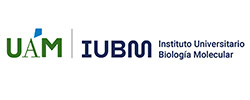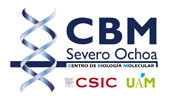Regulation of gene expression inLeishmania
Prof. José Mª Requena Rolanía. Profesor Titular. Departamento de Biología Molecular. UAM.
Prof. Manuel Soto Álvarez. Profesor Titular. Departamento de Biología Molecular. UAM.
The early-diverging protozoan parasite Leishmania causes leishmaniasis in many regions of the world. This disease is ranked second (after malaria) among parasitic diseases. No acceptable vaccine for preventing leishmaniasis exists and treatment options are limited. Moreover, Leishmania is an atypical eukaryote regarding genome organization and gene expression regulation: genes are expressed as long transcription units requiring extensive post-transcriptional processing. Thus, Leishmania is an adequate model for studying post-transcriptional regulation without the interference of transcriptional regulation. The main research activity of our group is focused on genome organization and gene expression studies. Still, we maintain some activity in developing vaccines to prevent leishmaniasis and improving diagnosis/typing methods.
In the last coup of years, our group has continued improving the genomic assemblies of prototypical Leishmania species, by a combination of second and third-generation NGS methodologies. In this regard, the collaboration with the Genomics & Massive Sequencing service at CBMSO (headed by Dr Begoña Aguado) is paramount. In particular, we have generated a de novo assembly for Leishmania major (Friedlin) genome, which was the first Leishmania genome sequenced (in 2005) and from then it became a reference and source for many molecular studies. In consequence, the new assembly generated by our group has gained general acceptance (TriTrypDB). Also, our group has determined the poly-A+ transcriptome for this species and generated complete gene models, paving the way for addressing differential gene expression. Genomic annotations require a continuous process of curation, derived from new studies that uncover functional roles of genes/proteins previously unknown or by the characterization of new transcripts/peptides that obligate to reconsider some gene models. Thus, the alliance of proteomics, genomics, and transcriptomics has resulted in a powerful combination for improving the annotation of the Leishmania genomes. For hosting the genomics/transcriptomics data generated (and curated) by our group for four Leishmania species (L. major, L. infantum, L. donovani y L. braziliensis), a web page was created: http://leish-esp.cbm.uam.es.
Finally, as members of the Tropical Diseases network (ISCIII; http://www.ricet.es/es/), which moved to a CIBER in infectious diseases (CIBERinfec; https://www.ciberinfec.es) in 2022, our group was engaged in collaborative research dealing with the molecular diagnosis and typing of Leishmania strains isolated from patients. In particular, we have characterized the Leishmania mitochondrial genome (aka, kinetoplast DNA or kDNA) which usually is ignored in genomic studies due to its structural complexity. After a characterization of the kDNA for several Leishmania species (and other trypanosomatids), we demonstrated that the kDNA maxicircle is a superior molecular marker for taxonomic and typing purposes in trypanosomatids.


